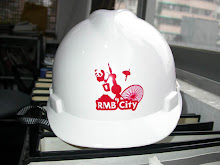


The flat city project begins with a mind mapping exercise done in groups of two. The objective is to map ideas related to ”city“. By comparing maps we are able to distinguish between broad ubiquitous ideas and unique singular ones. Subjects like education, technology, and culture are general and appear on all the maps. Yara imagines “City of the dead” somewhat like the Dia De Los Muertos. We realize this is a unique idea because it only appears on the map she is working with. The maps are engaging in that they tell mini stories about how one idea makes its way to another. After sifting through the broad topics individuals create their own focused maps using topics they are interested in developing. These maps are expanded and include imageresearch, color pallets, and typography, to guide the intended look and feel of the project.
Mind mapping tools are available on the internet that allow sharing and also create webs of associated content. Bubbl.us maps can be developed and shared by multiple users. I see Bubbl.us as a way to organize content generated in a broader map into specific categories. Credoreference.com organizes a map from words typed into a search. Both sites are accessible through the Ringling Library link. I find these internet searches to create some seeming random branches that I have yet to decipher. The human mind is still necessary to filter through the words and make the conceptual connections. I encourage the web based maps to complement, but not replace the maps done by the human hand and mind. Standard 8 1/2 x 11 pages or even screen sized maps do not encourage the outpouring of ideas that can fill a wall sized sheet of paper.
Thank you Emily and Michael for such a well developed mind map.
Mind Mapping Continued


When we mind mapped the article titled“Bad Press” by Elizabeth Diller, we discovered how a simple object like a man's white oxford shirt could reveal all sorts of underlying meaning ranging from economic hierarchy, to women's roles, to disorder.
















